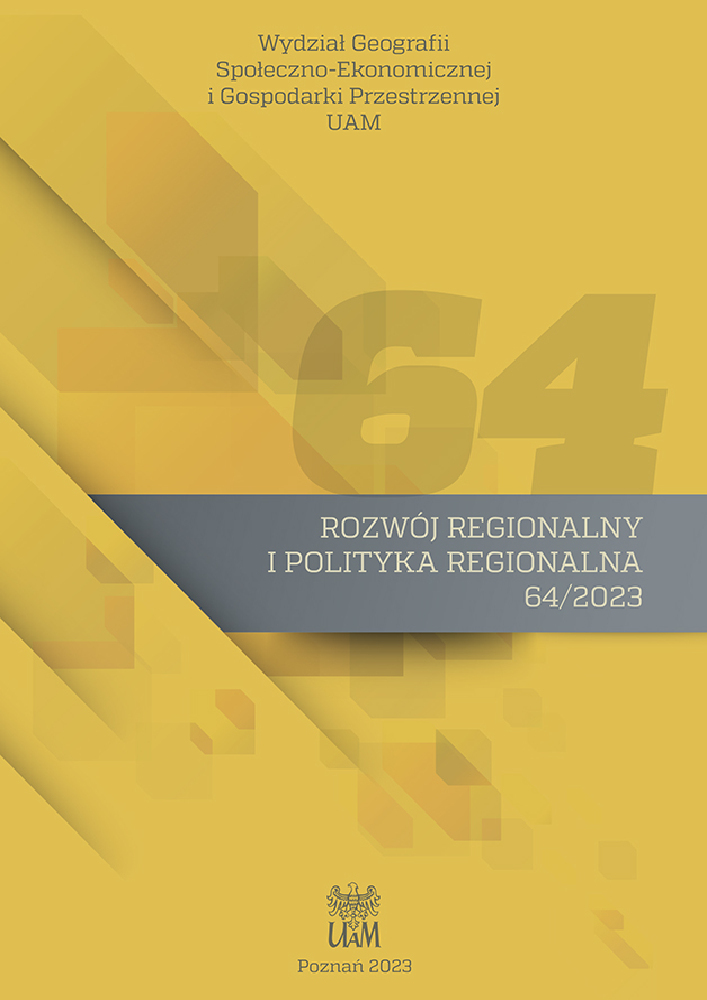Abstrakt
Drzewa stanowią zasadniczy element zielonej infrastruktury pełniący usługi ekosystemów. Jednak podstawą racjonalnego gospodarowania zadrzewieniem w miastach jest bilans korzyści i strat związany z ich obecnością w przestrzeni zurbanizowanej, zwłaszcza w dobie zmian klimatycznych i wzmagających się anomalii pogodowych. Celem artykułu jest przedstawienie problematyki zagrożenia ze strony drzew w Polsce na tle wybranych krajów Europy i Ameryki. W ramach pracy sporządzono statystyki wypadków i szkód powodowanych przez drzewa podczas wichur w latach 2000–2021. Powstał współczynnik regionalny ryzyka związanego z wiatrołomami i wywrotami. Badania własne udowodniły, że liczba i skutki wypadków w Polsce są na podobnym (niskim) poziomie co na świecie. Należy więc chronić drzewa, dbając o ich stan. Przedstawiono wytyczne do zarządzania ryzykiem. Wyniki badań mają przyczynić się do lepszego gospodarowania drzewami w przestrzeni zurbanizowanej, ale i do poprawy warunków życia człowieka w miastach.
Bibliografia
Ball D.J., Ball- King L. 2011. Public Safety and Risk Assessment: Improving Decision Making. Earthscan, London.
Chmielewski T., Szer J. 2018. Możliwe straty spowodowane w Polsce wichurami, trąbami powietrznymi i szkwałami. Inżynier Budownictwa: 26–31.
Czerwienic M., Lewińska J. 2000. Zieleń w mieście. Instytut Gospodarki Przestrzennej i Komunalnej, Kraków.
Dygulska A., Perlańska E. 2015. Mapa wietrzności Polski. Projekt Czysta Energia. Akademickie Centrum Czystej Energii, Słupsk.
Ellison M.J. 2005. Quantified Tree Risk Assessment in Management of Amenity Trees. Journal of Arboriculture, 31(2): 57–65. DOI: https://doi.org/10.48044/jauf.2005.007
Eiber T. 1998. Forest Insects and Disease ( http://www.dnr.state.mn.us/fild/june98/06309816.html ).
GUS. 2021. Rocznik Statystyczny Województw. Warszawa ( online: http://www.stat.gov.pl ).
Hubrig M. 2004. Analyse von Tornado‑ und Downburst ‑Windschäden an Bäumen. Forst und Holz, 59: 78–84.
Krynicki M., Witkoś K. 2016. Monitoring standardów w zarządzaniu zielenią wysoką w największych miastach Polski. Fundacja Ekorozwoju, Wrocław.
Lorenc H. 2012. Struktura maksymalnych prędkości wiatru w Polsce. [W:] H. Lorenc (red.), Klęski żywiołowe a bezpieczeństwo wewnętrzne kraju. IMiGW, Warszawa, s. 33–59.
Łozowska-Stupnicka T. 2000. Ocena ryzyka i zagrożeń w złożonych systemach człowiek–obiekt techniczny–środowisko. Politechnika Krakowska, Kraków.
Maciążek A. 2005. Pomiary wiatru. Gazeta Obserwatora IMGW, 3: 39–41.
Mell I. 2016. Global Green Infrastructure. Lessons for Successful Policy-making, Investment and Management. Routledge, Taylor & Francis Group, London–New York. DOI: https://doi.org/10.4324/9781315720968
Mizgajski A., Stępniewska M. 2009. Koncepcja świadczeń ekosystemów a wdrażanie zrównoważonego rozwoju. [W:] D. Kiełczewski, B. Dobrzańska (red.), Ekologiczne problemy zrównoważonego rozwoju. WSE, Białystok, s. 12–23.
National Tree Safety Group. 2011. Estimating the costs and benefits of changing the approach to tree safety management and the role of local risk/benefit evaluation. Centre for Decision Analysis and Risk Management Middlesex University, s. 14.
Romanowska-Słomka I., Słomka A. 2002. Zarządzanie ryzykiem zawodowym. Wyd. II. Tarbonus, Tarnobrzeg.
Rosłon-Szeryńska E. 2012. Ocena zagrożenia bezpieczeństwa ludzi i mienia powodowanego przez drzewa o osłabionej statyce. Uprawa i Ochrona Drzew, Czasopismo Międzynarodowego Towarzystwa Uprawy i Ochrony Drzew, 27: 1–89.
Rosłon-Szeryńska E. 2019. Drzewa w przestrzeni zurbanizowanej. Korzyści a zagrożenia. Wyd. SGGW, Warszawa
Solon J., Roo-Zielińska E., Affek A. i in. 2017. Świadczenia ekosystemowe w krajobrazie młodoglacjalnym. Ocena potencjału wykorzystania. Instytut Geografii i Przestrzennego Zagospodarowania Polskiej Akademii Nauk, Wyd. Akademickie SEDNO, Warszawa.
Szczepanowska H.B., Sitarski M. 2015. Drzewa. Zielony kapitał miast. Jak zwiększyć efektywność pracy drzew. IGPiM, Warszawa.
Szulczewska B. 2018. Zielona infrastruktura – czy koniec historii? Studia, 189. Polska Akademia Nauk, Komitet Przestrzennego Zagospodarowania Kraju, Warszawa.
Taszarek M., Brooks H.E. 2015. Tornado climatology of Poland. Monthly Weather Review, 143: 702–717. DOI: https://doi.org/10.1175/MWR-D-14-00185.1
Wessolly L. 1997. Metody bezinwazyjnego określania statyki drzew. Sztuka ogrodów w krajobrazie miasta. Konferencja Naukowa 20–22 czerwiec 1997. VI Targi Zieleni Miejskiej, Wrocław, s. 213–219.
Licencja
Prawa autorskie (c) 2023 Edyta Rosłon-Szeryńska

Utwór dostępny jest na licencji Creative Commons Uznanie autorstwa 4.0 Międzynarodowe.

